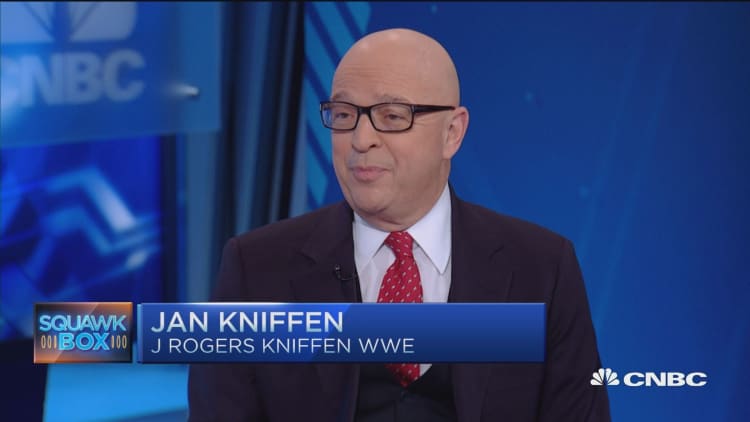
Kohl's big fiscal first-quarter comparable sales miss is stirring up more reminders of the huge nosedive retail took during the most recent recession.
The low-price department store chain on Thursday said its comparable sales slid 3.9 percent during the recently ended quarter, representing its biggest drop in that metric since the first quarter of 2009. During that period, the retailer's comparable sales fell 4.2 percent.
Analysts had expected Kohl's to report a slight uptick in comparable sales.
Kohl's big sales miss came just one day after Macy's reported a weaker-than-expected comparable revenue decline of 5.6 percent, which also marked its biggest drop since the recession in 2009. In the wake of Kohl's results, its shares slid more than 11 percent, to around $34.30, midday Thursday. The company's stock had previously not traded as low since March 2009.
"There seems to be some more [macroeconomic issues] given the performances of both ourselves and the competition," CEO Kevin Mansell told analysts on a conference call.
Similar to Macy's, weak traffic in its stores — particularly during the unseasonably cool months of March and April — pressured Kohl's top-line. However, management was quick to admit that while sales of seasonal items such as shorts were a headwind, other issues were more company-specific.
Those include what it considers to be too much emphasis on digital marketing, and not enough on traditional mediums such as print.
However, because Kohl's cannot yet identify how much of its troubles are related to the broader economy versus its own stores, management said it will maintain its full-year guidance for earnings per share of $4.05 to $4.25, with comparable sales of flat to 1 percent growth.
During the first quarter, the company's 31 cents per share profit fell 6 cents short of consensus estimates.
"The first quarter is a small percentage of the year and there is not enough information that we see to put us in a position where we could knowledgeably tell you some kind of update," Mansell said.
Management sounded optimistic that changes to its marketing plan, the onset of warmer weather and pared down inventories should help Kohl's results improve in the second quarter. Its inventory per store was down 2 percent at the end of the quarter, which should help the retailer avoid unplanned markdowns.
Still, changes in consumer behavior — which include a shift in spending toward dining out and travel — as well as inflated inventories at competitors such as Macy's, will continue to pressure Kohl's moving forward.
"Apparel is fighting an uphill battle," Cowen and Company analyst Oliver Chen told investors. "As evidenced by surprisingly weak April trends at L Brands, pressure at Macy's and department stores, and specific issues at Gap, retail is in the midst of a transition."
Further signs of retail's health — or lack thereof — will come later Thursday and early Friday, when Nordstrom and J.C. Penney report, respectively.





